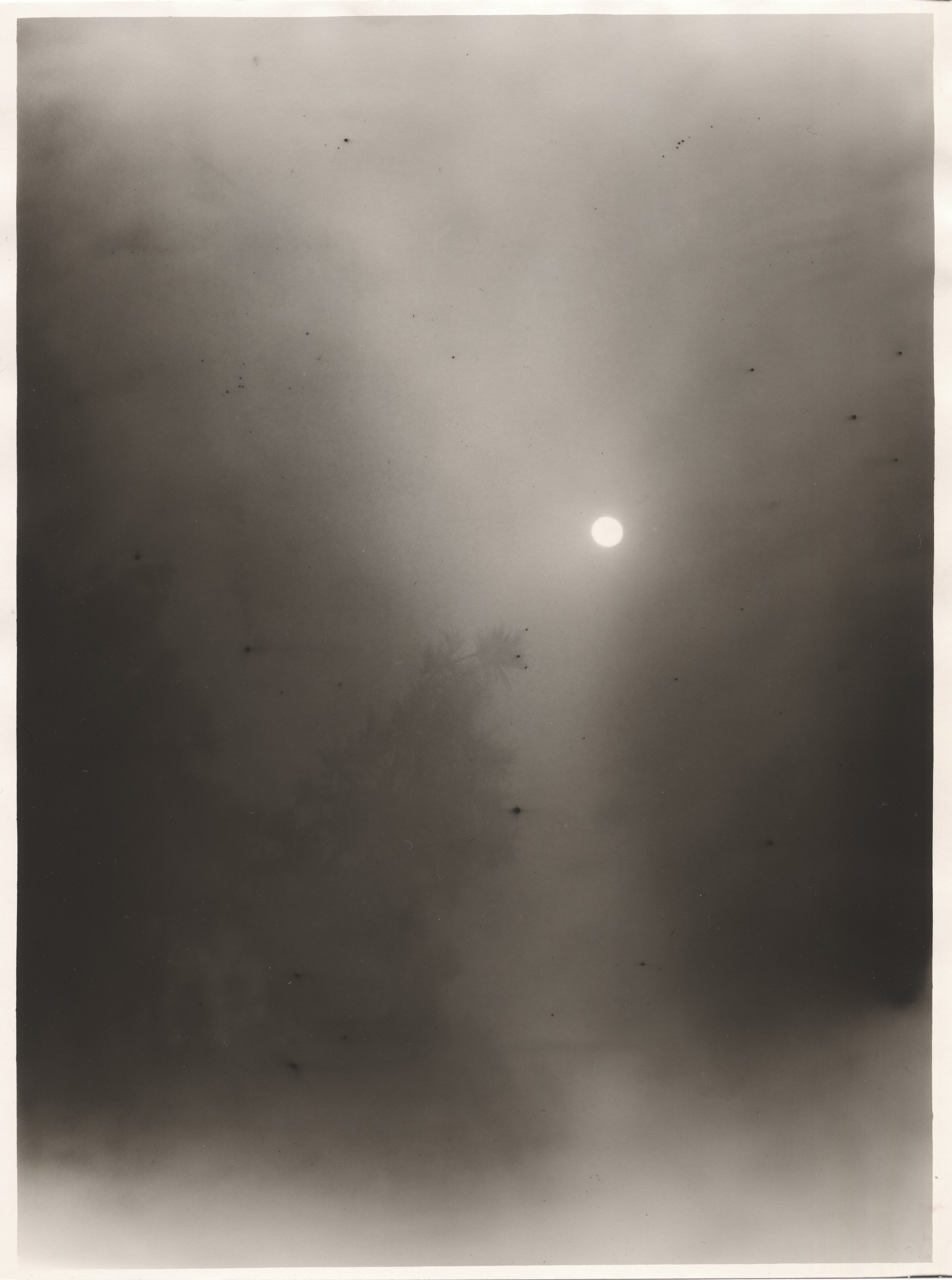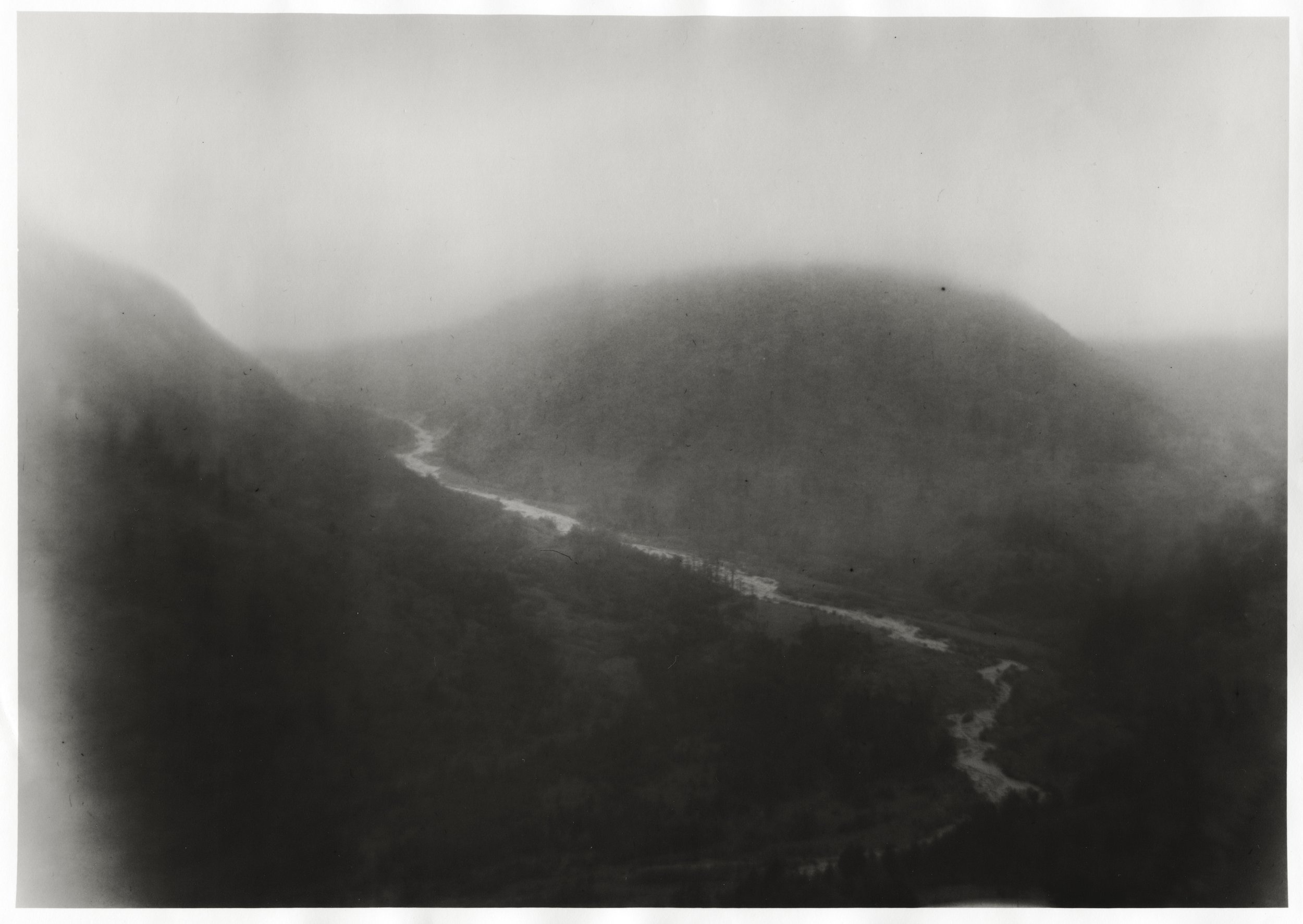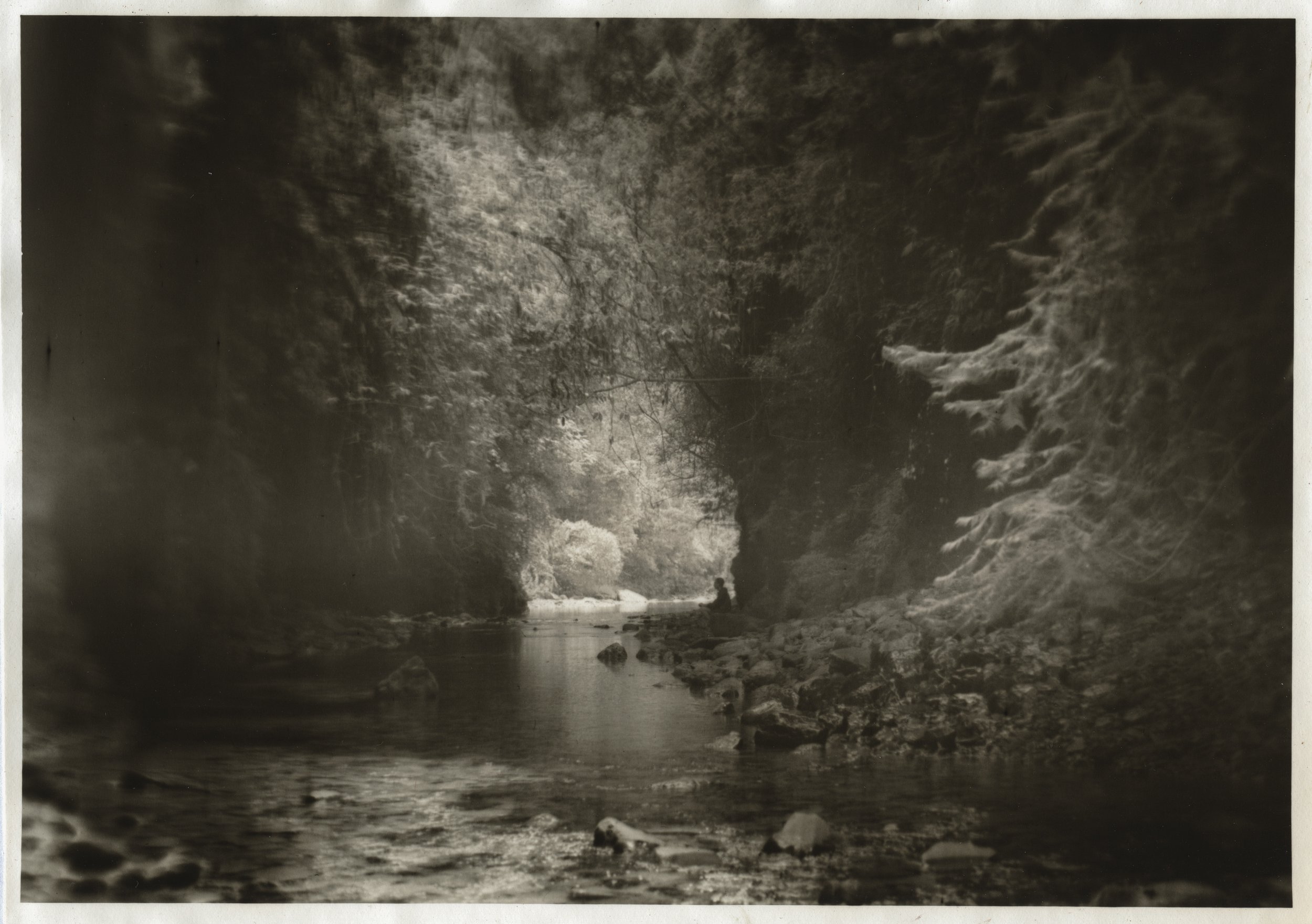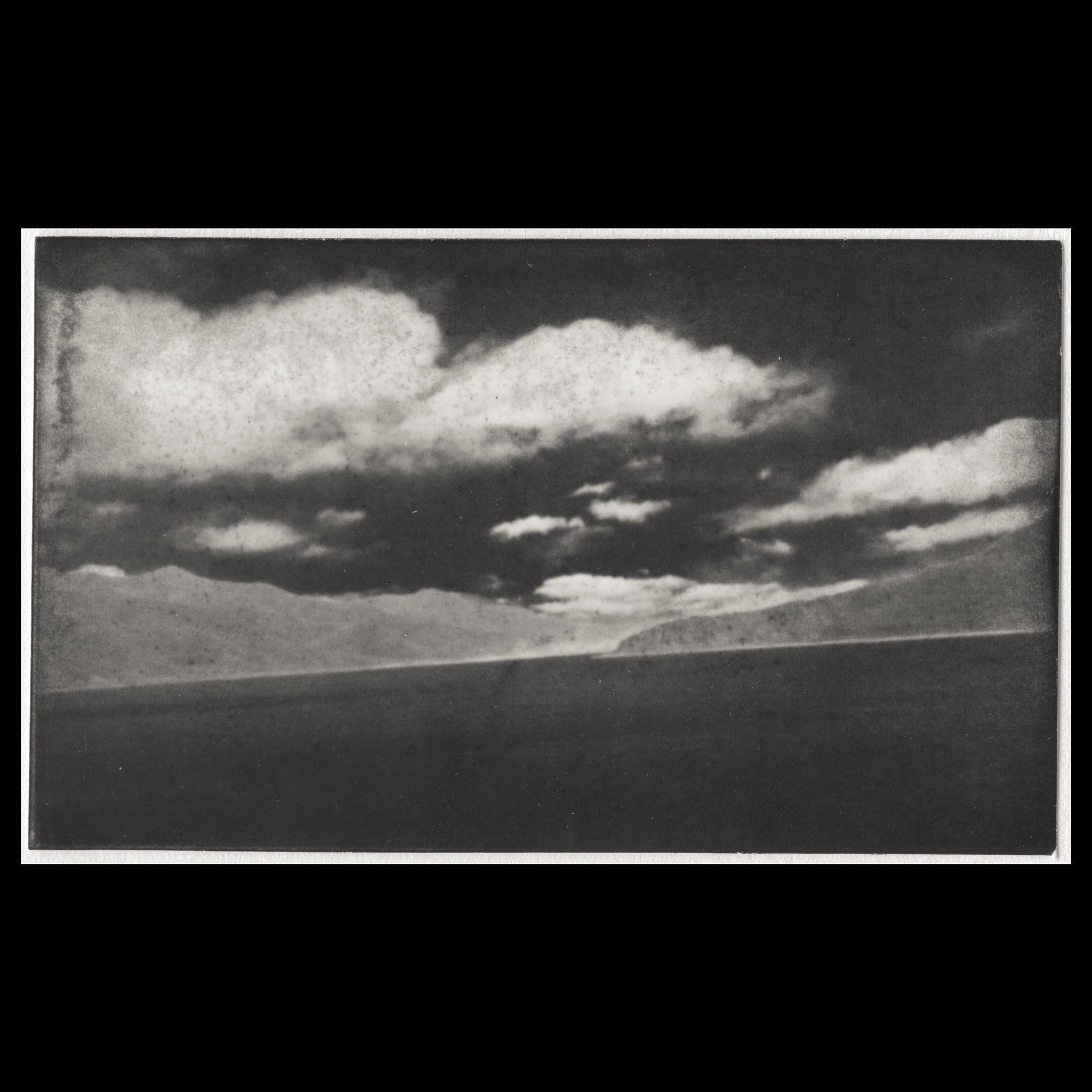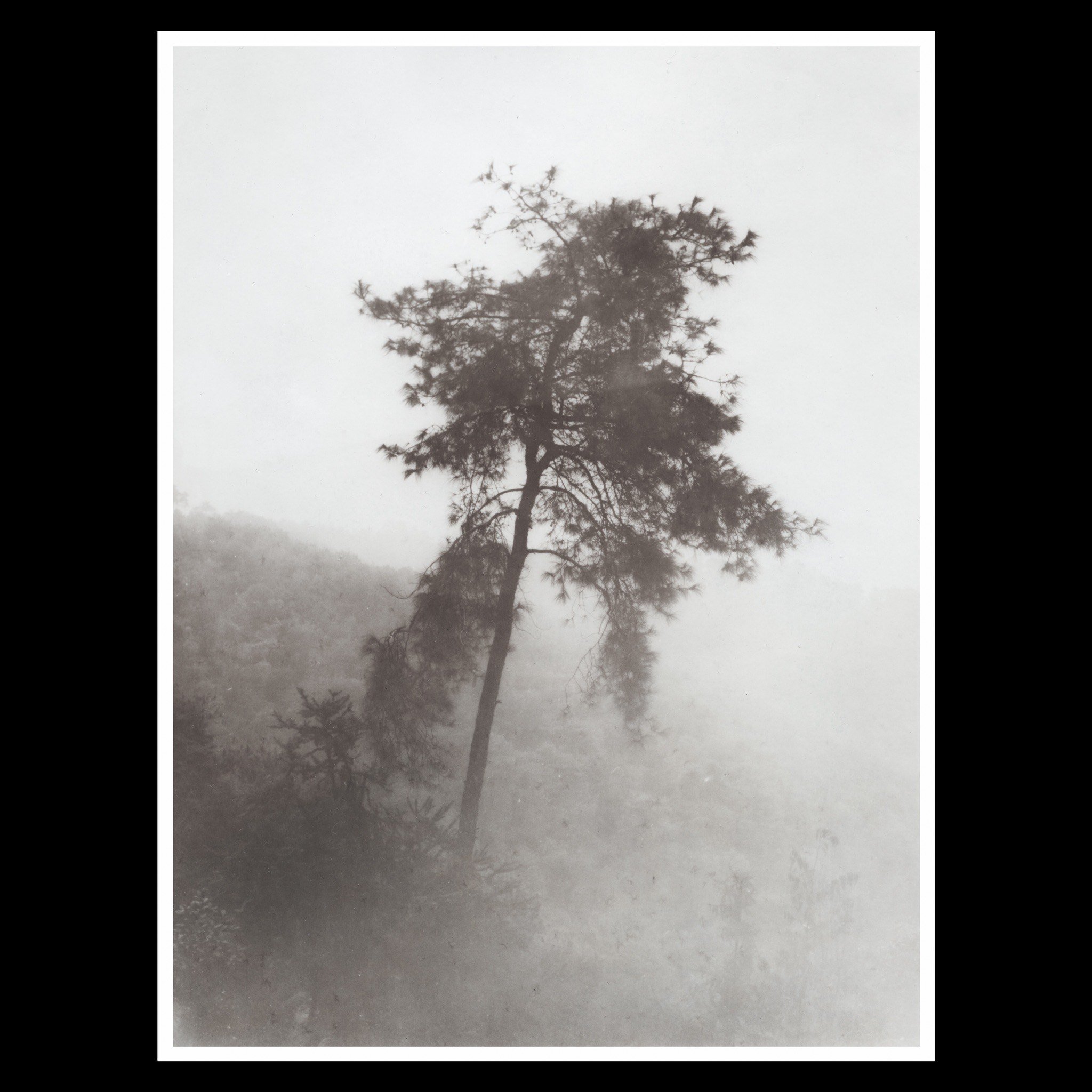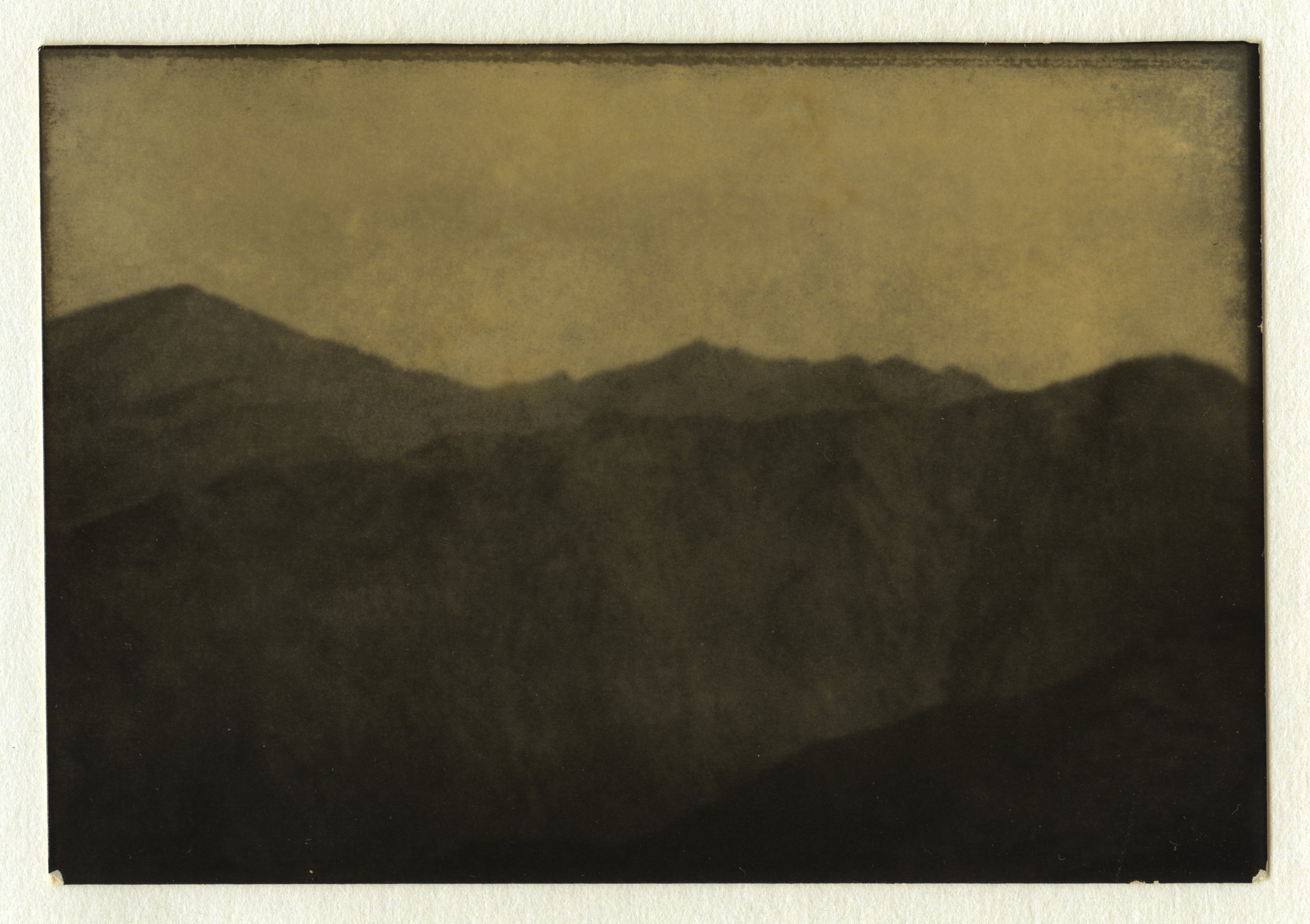In a landscape where digital photography's swiftness often reigns supreme, stumbling upon Zhao Han’s work on Instagram was like a breath of ancient Chinese literati painting brought to life. It was also my first introduction to the traditional method of Silver Gelatin Printing. Amidst the flood of instant gratification images on Instagram, Zhao Han steadfastly adheres to his preference. Employing the time-honored technique, he meticulously crafts each piece, and the beauty of his photographic works transcends not only the subjects he captures but also the intricate nuances of his darkroom process. Thus, these aren't just mere images; they are painstakingly handcrafted pieces of art that pay homage to an era where each photograph required a series of manual steps – from selecting negatives to mixing chemicals, printing, and waiting.
Moreover, the origins of Zhao Han’s distinctiveness are found in the materials he employs. Old enlargers discovered in flea markets, vintage photographic paper bearing years of history – these discarded treasures are reborn within his creations. As the world propels forward, he skillfully merges the remnants of the past with his art, fusing generations and eras with each click of the shutter.
Stepping into his monochromatic universe is akin to straddling two worlds – mine, a fusion of digital photography's immediacy and editing software; and his, a realm of natural exploration and meticulous hands-on darkroom craftsmanship. It's a process to practice, slow down, contemplate, and appreciate the juxtaposition of tradition and innovation.
May this interview serve as a bridge leading us into his photographic world. Through the following Q&A, we catch a glimpse of the wellspring of Zhao Han’s artistic photography. While this discussion doesn't delve into the specifics of traditional silver gelatin printing, the aim is to convey how he discovers and relentlessly pursues his passion of his life.
1. All the photographs in your Instagram are created using the traditional silver gelatin printing process. Could you introduce to us the general process of this printing method?
Sure, I usually use a 120mm film camera for shooting. When I return to the darkroom, I develop the film with different developing solutions based on the content of each shot, to achieve the desired results. I manually create silver gelatin prints using my own-designed customized enlarger at the last process. I often experiment with image processing, using paper that is mostly from 50 years ago, and some even over 100 years old. I use unconventional light sources for exposure and experiment with different chemical solutions at various temperatures to achieve different effects. The entire process is improvisational.
2. The traditional silver gelatin printing technique is known for its unique and classic beauty. It was through your works that I first truly encountered it. How did you come across this photography technique? And how do you use it to enhance the presentation of your works?
I got into art photography completely by chance. I didn't attend university, nor did I receive formal training in an art institute. I grew up in the countryside, worked after completing three years of high school in the city, and had various jobs as a server, chef, hiking guide, shop owner, and more. It wasn't until I was nearly thirty that I became interested in photography and started learning on my own. One day, I stumbled upon an old Soviet enlarger at a flea market, and I was deeply fascinated by traditional silver salt optical equipment, so I bought it. During the pandemic in 2020, I was trapped at home and started using it. I selected images I had taken over the past fifteen years as material, and with only a pack of 50-year-old 5-inch photographic paper at home, I created my first silver gelatin series titled "Floating." Through optical and chemical experiments, it took on a new rough texture and lively tonalities in its highly unstable state, providing immense solace during that special period.
3. Your works convey a strong sense of the temperament of ancient Chinese literati paintings—serene, far-reaching, and imbued with the meaning of rare human presence. Is Chinese painting your main source of creative inspiration? Have you discovered any similarities between this Eastern and Western art form?
Modern people access information through various means, and the forms of artistic expression are complex. I never studied art, I rarely attend exhibitions, and often can't understand them even if I do. Thus, I seldom draw attention from the outside world; instead, I bring my inner genuine feelings into my works. Growing up on this ancient land, the ancient Chinese poems, texts, paintings, and cultural heritage that I've encountered have shaped my perspective. It's not so much a source of creative inspiration as it is an instinct and intuition for creation. In recent years, Western movies and art have provided me with a lot of inspiration. When I first entered the city, I was deeply passionate about Western films. The works of Polish director Kieślowski and Greek director Angelopoulos left a profound impression on me, and I was completely immersed in the atmosphere created by film photography. Additionally, two years ago, I read a book about modern art and was fascinated by the simplicity and authenticity of the landscapes by artists like Van Gogh and Millet.
I can't compare Eastern and Western art in terms of form or region. The history and content of Chinese painting are vast, and my understanding is limited. I'm even less familiar with Western art. However, for the works I like and create, I don't focus on whether it's Eastern or Western art, painting, photography, or cinema. I care whether they are good and valuable art.
4. Your theme "Void and Stillness" is captivating, conveying a sense of spatial vagueness and temporal pause. Could you elaborate on the inspiration behind your creations and how you convey this theme in your works?
I never discuss the themes of my works. Images often have independent expressive power and don't need language to decorate or convey. The words "Void and stillness" have been discussed for thousands of years in the Chinese world, and it may take a whole book to cover. However, I use it in my works to pursue a personal feeling and express gratitude for a kind encouragement. During a plein air painting class in my youth, I was deeply drawn to the silhouette of the contour lines of the model's nose against a bright window. However, the model appeared somewhat awkward when I was painting, sitting right in front of me. Throughout the class, I was caught between reality and reminiscence, and I finally broke the limitations of space and time to draw a simple profile line. This completely contradicted the class requirement, and in that closed and strict educational environment at the time, my painting teacher, Ms. Tang Zhuo, actually encouraged me to stay true to my genuine feelings.
Time came last summer. My friend Dongmu and I were hiking in the Jinfo Mountain Canyon in Chongqing, China. We got separated and became completely immersed in the wonders of nature. When I was on my way back, I was struck by a distinct outline at the mouth of a distant cave in the canyon, like a lightning bolt. For a brief moment, I was thrown into a vortex formed by time and space, as if I had returned to that class twenty years ago. After calming down, I took a photograph. Many doubts in my creative process dissolved at that moment. Therefore, I named the series of works created in that special state, which broke free from the constraints of time and space, "Void and Stillness."
5. The monochromatic beauty of silver gelatin prints can evoke a sense of eternity and nostalgia. How do you think this effect complements the themes you explore in your nature photography?
Photography is a dual art of time and space, and the theme of image art primarily corresponds to the feelings of the viewer. My work is essentially a process of observation and discovery. I collect scenes I've witnessed and bring them back home, then create these uncertain images in the laboratory. I compare and select textures, tones, hues, contrasts, and other fundamental elements, placing the images I like together. I work slowly and am not very sensitive to feelings, so I choose monochrome images with fewer elements. They allow me to observe and discover more directly and clearly. With the increase in the number of works and the depth of my perception, themes and the overall language of the images naturally form.
6. As a nature photographer, do you randomly capture the beauty of nature, or do you already have ideas to capture and present them in nature?
Almost all my images are taken randomly. I enjoy the freshness and uncertainty of spontaneous photography. I usually explore near the countryside where I live or during my travels. Sometimes I might take many photos in a day, and other times I might not take any for a whole month. It depends on the environment and my feelings. Ten years ago, I had experience assisting documentary photographers, so initially, I also attempted to design projects for documentary photography. However, I wasn't skilled at it, and it was actually the landscape pictures taken spontaneously that ignited my passion for photography.
7. The tranquility of nature is vividly portrayed in your photographs. How do you find moments of peace and harmony in your theme, and how do you capture them on film?
Whether in life or work, I'm a demanding person, which has brought me a lot of pain. When making prints, sometimes I wanted to enrich the details in some shadows, and brighter highlights in some parts to balance the whole composition. But the final prints show the unexpected results that discourage me so much. Frustration arises immediately when technical limitations prevent me from achieving my expectations. But I'm eventually aware that there's no perfection in the world and in my print process too. I can not totally control everything. I only need to work more cautiously during shooting and editing. The more relaxed I am, the better creativity I can produce, and the more calm I am…in a better circumstance. So, I return to a relaxed state, comforting myself that not every goal Messi scores is brilliantly executed.
8. Have you ever used digital cameras? What are the unique and irreplaceable aspects of film compared to digital images?
I initially learned digital photography, but my knowledge was limited and I didn't shoot much. Later, I chose to use film cameras for artistic creation. One reason was my experience assisting documentary photographer Patrick Wack. Another reason was my fascination with an old silver enlarger I found at a flea market. The rapid advancement of digital cameras seemed to replace film in all fields. However, digital cameras capable of capturing rich tones in black and white images are beyond my ability to afford. Moreover, my slow shooting process and limited output suited film cameras, especially for handcrafting gelatin silver prints in the darkroom. The inability to view captured material in real-time in film photography led to significant errors, but it also instilled a more disciplined and serious work ethic. Those artists who continue to work with film cameras understand these differences, as renowned filmmaker Nolan has pointed out once in an interview ‘Films shot on celluloid have higher resolution and better color presentation in video formats. They better preserve the authentic appearance of the world as seen by the naked eye, providing a more vivid and delicate visual effect. It’s the best way to view with the naked eye.’
9. If you were to use a few keywords to describe your work, what would they be? What specific qualities do you hope viewers will perceive in your work?
Pure, sincere, calm, moving. These were the words initially used by my loyalty customers. When I heard them, I was deeply moved. My less formal art education made it hard for me to interpret my own works. However, the comments from those who bought my works, who hang them in their homes, give them as gifts, and integrate them into their lives, always touch me with their honesty. Art has various modes of presentation and effects, but many of the historical and contemporary artworks I like have been commissioned. Perhaps the comments from buyers are the most authentic and credible. Poetry doesn't belong to its writers, but to those who need it. The same applies to images. Therefore, I never assume that viewers will extract specific content from my works. I firmly believe that everyone sees something different in the same scenery, and different people will derive varying feelings from the same image.
10. In your ongoing photography journey, what do you consider the most important quality? How do you embody this quality in the specific processes of shooting and printing?
In the movie "Il Postino:The Postman," the postman Mario asks the poet Neruda to help him write a poem for the girl he loves. He says, "You're such a great poet, and you can't even write a small poem?" Neruda responds anxiously, "I haven't even seen her, how can I write a poem?" When I saw this scene, I was deeply moved. I firmly believe that authenticity is the most precious quality in art throughout history and cultures. I'm fortunate to have mastery over this medium that goes against the current. Although I started late with a poor background, spending a lot of time on trivial matters, I enjoy the feeling of work closely aligned with life and the heart. Whenever I step into the landscape of nature, I feel like I'm back in my childhood. I bring those fleeting colors back home and create beloved images. I always feel a sense of authenticity and contentment.
Thanks ZhoaHan and please find more his works @Zhao Han
Thank YOU for reading
